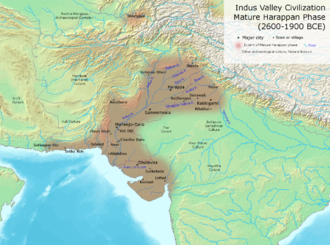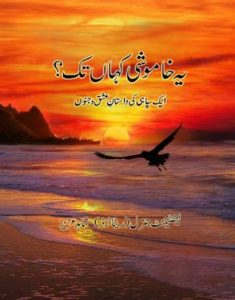#Map shows the expansion of the Buddhist #religion. Source: https://t.co/UwHm6i4bcK pic.twitter.com/zJMH8NQY5g
— Simon Kuestenmacher (@simongerman600) September 2, 2018
Buddhism is probably the best demonstration of Indian Soft Power ever. It’s fascinating though how quickly Buddhism detached itself from the Bihari(?) Motherland.
Shockingly I just noticed on the map that Mindanao Island was a focal point for Buddhism. In some way Hindu-Buddhist culture among the Malay peoples lay the foundation for Islam.
The Hindu-Buddhist cultural revolution was strongest in the coastal areas of the island, but were incorporated into local animist beliefs and customs tribes that resided more inland. The Rajahnate of Butuan, a fully Hindu kingdom mentioned in Chinese records as a tributary state in the 10th century AD, was concentrated along the northeastern coast of the island around Butuan.[15] The Darangen epic of the Maranao people harkens back to this era as the most complete local version of the Ramayana. The Maguindanao at this time also had strong Hindu beliefs, evidenced by the Ladya Lawana (Rajah Ravana) epic saga that survives to the modern day, albeit highly Islamized from the 17th century on wards.
Sultanates and Islam
The spread of Islam in the Philippines began in the 14th century, mostly by Muslim merchants from the western part of the Malay Archipelago. The first Mosque in the Philippines was built in the mid-14th century in the town of Simunul.[15] Around the 16th century, Muslim sultanates: Sulu, Lanao and Maguindanao were established from formerly Hindu-Buddhist Rajahnates.
As Islam gained a foothold over most of Mindanao, the natives residing within the Sultanates were either converted into Islam or obligated to pay tribute to their new Muslim rulers. The largest of the Muslim settlements was the Sultanate named after the Maguindanaoans. Maps made during the 17th and 18th centuries suggest that the name Mindanao was used by the natives to refer to the island, by then Islam was well established in Mindanao and had influenced groups on other islands to the north.[dubious ][citation needed]It intersected with another random thought of mine when I saw the below video (Happy Janmashtami):
https://www.facebook.com/soketu/videos/10157829243414251/
Osho talks about Lord Krishna’s “material detachment” (which to me sounds a bit stark) but I immediately guessed Osho was a UPite. I was right, he’s from MP and born to Jain parents (apparently there is a strain of Jainism in Bundelkand).
My intuition just came about because I feel there is a sweet spot for philosophical and religious development in the Hindi CowBelt (BIMARU). Extremely dense populations, relatively low material standards (compared to the coast) and insulated from foreign influences (when we think about westernised India, we mainly think Mumbai).
Like the oceanic churn of early Hindu mythology so in the same way this belt churns out religions and philosophies that “catch on” to the outer world.
It touches on as well about the “Inward Looking” nature of India in contrast to the more “Outward Looking” nature of Pakistan (the same terms apply in Academia as well). The rather frenetic nature of Pakistan struggling in the Great Geopolitical Games may echo its ancient geography as being a crossroads of sort; one of the many roads to India.
Due to the events of the last millennia when foreign incursions have shifted India’s geographic focus to the Punjab-Delhi axis it may be more worthwhile for India to start projecting as an “Indian Ocean Hegemon” as opposed to leaving it clear for the Chinese. Being caught up in Central Asian intrigue isn’t necessarily the most optimal path for India because the Islamic world forms an ideological wall to Indian/Hindu concepts in the way that the Far East doesn’t..
It parallels how keenly Indians are in emphasizing Pakistan’s (and sometimes Afghanistan) “Indianess” but seem extraordinarily ambivalent about Bangladesh (instead they complain about “Bangladeshi infiltrators”).
It makes me ponder that Pakistani Non-Muslims (of the upper and middle stratas) sometimes have it better than Indian Muslims. Pakistan is explicitly a Mughal-Muslim Republic and once one buys into that preliminary identity, it’s easy to become accepted (I’m excepting the lower stratas who have immense difficulties). However like Israel India is also trying to maintain it’s liberal credentials and therefore there is much majoritarian resentment towards the “privileges” of the minority. Therefore Muslims are always perceived as some sort of 5th column. If for instance the Bangladeshi emigrants in the North-East were never allowed the vote then it would be a Gulf Khaleej type situation where 80% of the population could be disenfranchised but no one would be too bothered about it because it was more about the economics than politics anyway. However India refuses to budge from it’s Nehruvian firmanents and that actually makes her susceptible to populism..
 With a few samples from outside of the IVC region, and one (or two) samples from within the IVC region, geneticists are converging upon the likelihood that the profile in the greater IVC region before 2000 BC was a compound of these farmers with the AASI. But even within the IVC region, there seems to have been a range of variation in ancestry. The IVC was a huge zone. It may not have been dominated by a single ethnolinguistic group (even today there is the Burusho linguistic isolate in northern Pakistan). Note that the much smaller Mesopotamian civilization was multiethnic, with a non-Semitic south and a Semitic north (Sumer and Akkad).
With a few samples from outside of the IVC region, and one (or two) samples from within the IVC region, geneticists are converging upon the likelihood that the profile in the greater IVC region before 2000 BC was a compound of these farmers with the AASI. But even within the IVC region, there seems to have been a range of variation in ancestry. The IVC was a huge zone. It may not have been dominated by a single ethnolinguistic group (even today there is the Burusho linguistic isolate in northern Pakistan). Note that the much smaller Mesopotamian civilization was multiethnic, with a non-Semitic south and a Semitic north (Sumer and Akkad).